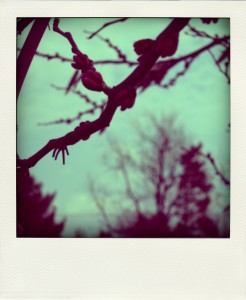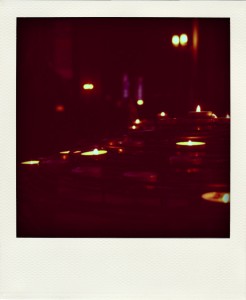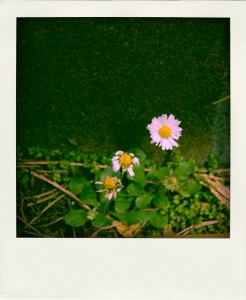
In celebration of APIA Heritage Month, we’re continuing our annual tradition of asking respected teachers and writers of Asian American poetry to share favorite writing exercises with us on successive Fridays during May. This week’s installment was contributed by Aimee Nezhukumatathil.
Stationery
by Agha Shahid Ali
The moon did not become the sun.
It just fell on the desert
in great sheets, reams
of silver handmade by you.
The night is your cottage industry now,
the day is your brisk emporium.
The world is full of paper.
Write to me.
The Context
The hand-lettered envelope. The canceled stamp. The tooth of the paper that nibbles the ink. The epistle is a type of poem that underscores the best intimacies that can arise from a letter: the measured and focused address to a specific recipient. In a world that values the addictive glow of a screen, the speedy text message, the quick hello and check-in—much can be gained and admired in a poem that follows the ancient and simple form of a letter.
The word epistle comes from the Latin word (espistula) for letter. In the Middle Ages, the art of letter writing was often taught as a necessity for building community and encouraging discourse. In fact, the writing of epistles was actually amplified as old road structures began to decay and crumble. Travel became increasingly difficult—people soon relied on letter writing to conduct and negotiate business in place of making a claim in person. Another variation of the epistle is one that Ovid himself employed—epistles as a way to explore persona. In his Heroides, he imagines letters written by neglected or abandoned heroines of Greek mythology: writing as Penelope to Odysseus, writing as Helen to Paris, as Medea to Jason.
When is the last time you opened your mailbox and found a bona fide hand-written letter? So much of mail these days is ‘sad mail’—coupon flyers, missing children notices, bills, sweepstakes packets. But oh the joy and delight when you find your name written by a friend or loved one’s hand! Or the surprise and mysterious architecture of a handwriting you’ve never seen before! When was the last time you wrote a letter?
The Exercise
Feel free to mimic the relationship uncovered within most epistles—the letter poem is addressed to someone ‘you’ can’t talk to for whatever reason—the person is far away or deceased or famous, or even someone you know well, but you can’t say what needs to be said in real life. It should be clear to the reader who is being addressed within the title or the first few lines. There are no meter or rhyme rules for this form. This type of poem is more of a vehicle to explore persona and voice.
Still stuck? Write an epistle to any of the following: 1) an animal or plant, 2) yourself, ten years ago, 3) yourself, twenty years ago 4) your beloved, twenty years ago, 5) a future version of you, even if the future you imagine is simply ‘tomorrow’ 6) a company or corporation 7) one of the seven deadly sins or virtues (ie. Dear Lust,… or Dear Patience,…) 8) your zodiac or birthstone 9) your favorite “guilty pleasure” food or 10) the city you call ‘home’ in all its complicated and wondrous glory.
The Why
I’ve found that writing a poem TO someone (or some-thing!) makes the edges of imagery focus crisper into view. And in that focused state, the epistle begins to tighten up the rest of the poem’s language so that a distinct persona emerges and establishes a clear and immediate tone and mood in ways that other poems might not. And yet, writing a letter to a stranger takes the innate intimacy of an epistle a step further: it requires the invention of an imagined other (even if the person exists, he/she is still being imagined), and it fashions a sort of detailed handiwork about why we might find ourselves wishing to talk to them. And isn’t that such a good and necessary occupation, a welcome slowing down and stepping away from a handheld device or screen? I like to think of writing epistles as a writing towards—and attempting to love, or at least recognize—the strangers that live inside each of us.
For More Inspiration:
“Frame, an Epistle,” by Claudia Emerson
“note, passed to superman,” by Lucille Clifton
“Letter to Simic from Boulder,” by Richard Hugo
“As Children Together,” by Carolyn Forché
* * *
Aimee Nezhukumatathil is professor of English at State University of New York–Fredonia, where she teaches creative writing and environmental literature. She is the author of three poetry collections: Lucky Fish (2011), winner of the gold medal in poetry from the Independent Publisher Book Awards and the Eric Hoffer Grand Prize for Independent Books; At the Drive-In Volcano (2007), winner of the Balcones Prize; and Miracle Fruit (2003), winner of the Tupelo Press Prize, ForeWord magazine’s Book of the Year Award, the Global Filipino Award. Poems and essays are widely published in venues such as Tin House, Ploughshares, Orion, New England Review, Prairie Schooner, and noted in Best American Essays. Other honors include a poetry fellowship from the National Endowment for the Arts and the Pushcart Prize. She lives in Western New York in the middle of berry country with her husband and young sons.








